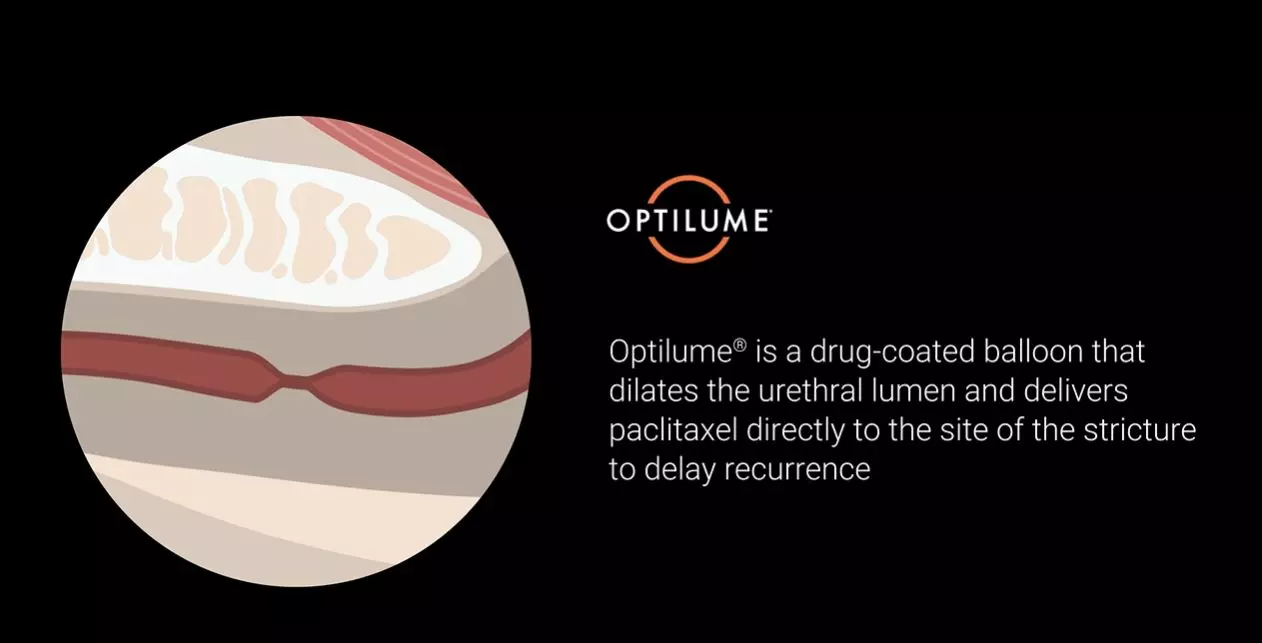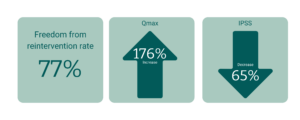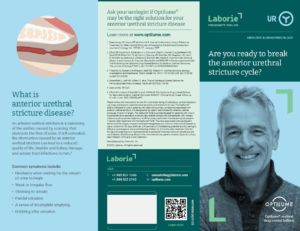¹. Tritschler S, Roosen A, Füllhase C, Stief CG, Rübben H. Urethral stricture: etiology, investigation and treatments. Dtsch Arztebl Int. 2013;110(13):220-226. doi:10.3238/arztebl.2013.0220
²Elliott SP, Virasoro R, Estrella R, et al. MP56-06 The Optilume Drug Coated Balloon for Recurrent Anterior Urethral Strictures: ROBUST I Clinical Study 3-year follow up, N = 43. J Urol 2021;206(3S):e971.
³Data on file
4Elliott SP, Coutinho K, Robertson KJ, D’Anna R, Chevli K, Carrier S, Aube-Peterkin M, Cantrill CH, Ehlert MJ, Te AE, Dann J, DeLong JM, Brandes SB, Hagedorn JC, Levin R, Schlaifer A, DeSouza E, DiMarco D, Erickson BA, Natale R, Husmann DA, Morey A, Olsson C and Virasoro R, One-Year Results for the ROBUST III Randomized Controlled Trial Evaluating the Optilume Drug-Coated Balloon for Anterior Urethral Strictures, The Journal of Urology® (2021), doi: 10.1097/JU.0000000000002346
5Steenkamp JW, Heyns CF, de Kock ML. Internal urethrotomy versus dilation as treatment for male urethral strictures: a prospective, randomized comparison. J Urol 1997 Jan;157(1):98-101. PMID:8976225.
6Al-Qudah HS, Santucci RA. Extended complications of urethroplasty. Int Braz J Urol. 2005 Jul-Aug;31(4):315-23; discussion 324-5. doi: 10.1590/s1677-55382005000400004. PMID: 16137399.








